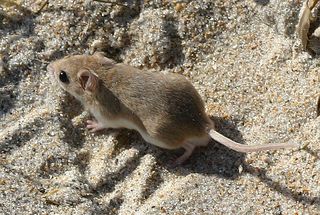Southeastern Beach Mouse: Difference between revisions
From Indian River Lagoon Project
mNo edit summary |
mNo edit summary |
||
| Line 19: | Line 19: | ||
<h2><span id="Preferred_habitat">Preferred habitat</span></h2> | <h2><span id="Preferred_habitat">Preferred habitat</span></h2> | ||
[[File:Southeastern_beach_mouse_juvenile.jpg|alt=Southeastern beach mouse (Peromyscus_polionotus_niveiventris) juvenile.|thumb|320px| | [[File:Southeastern_beach_mouse_juvenile.jpg|alt=Southeastern beach mouse (Peromyscus_polionotus_niveiventris) juvenile.|thumb|320px|Juvenile Southeastern beach mouse]] | ||
<h2><span id="Cover_requirements">Cover requirements</span></h2> | <h2><span id="Cover_requirements">Cover requirements</span></h2> | ||
Revision as of 12:33, January 29, 2022

Peromyscus_polionotus_niveiventris
Status: Threatened
The Southeastern beach mouse (Peromyscus_polionotus_niveiventris) is an Oldfield mouse subspecies that is only found on Florida's Atlantic coast barrier island between Volusia and Martin counties.
Description
The Southeastern beach mouse has a light brown and grayish back side, light brown forehead, and white belly. Tails are white on top and gray on the bottom. Adult males average a length of 5.3 inches while females have an average length of 5.5 inches. Females have a 2.2 inch tail while males have a two inch tail.[1]
Taxonomy
Etymology
Common names
Distribution
Conservation status
Preferred habitat

Cover requirements

